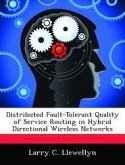Homeland Security of the United States is constantly under threat of attack from terrorist organizations. A variable and current terrorist threat is the use of unmanned aerial vehicles (UAVs) as weapons of mass destruction. These UAVs can be built simply and cheaply from commercial off the shelf (COTS) parts and are typically controlled using standard radio control (RC) technology. An emerging technology that is being implemented to control and communicate with UAVs is the 802.11 wireless network protocol or Wi-Fi. This project discusses various portions of the Wi-Fi protocol and analyzes the protocol to determine techniques for first detecting and then defeating wireless networks utilizing the protocol through denial or deception. The first set of techniques presented defeats a network through denial. These denial techniques are divided into two categories: broad area denial techniques and specific network denial techniques. After denial techniques are discussed a process for decieving an 802.11 wireless network is presented.








